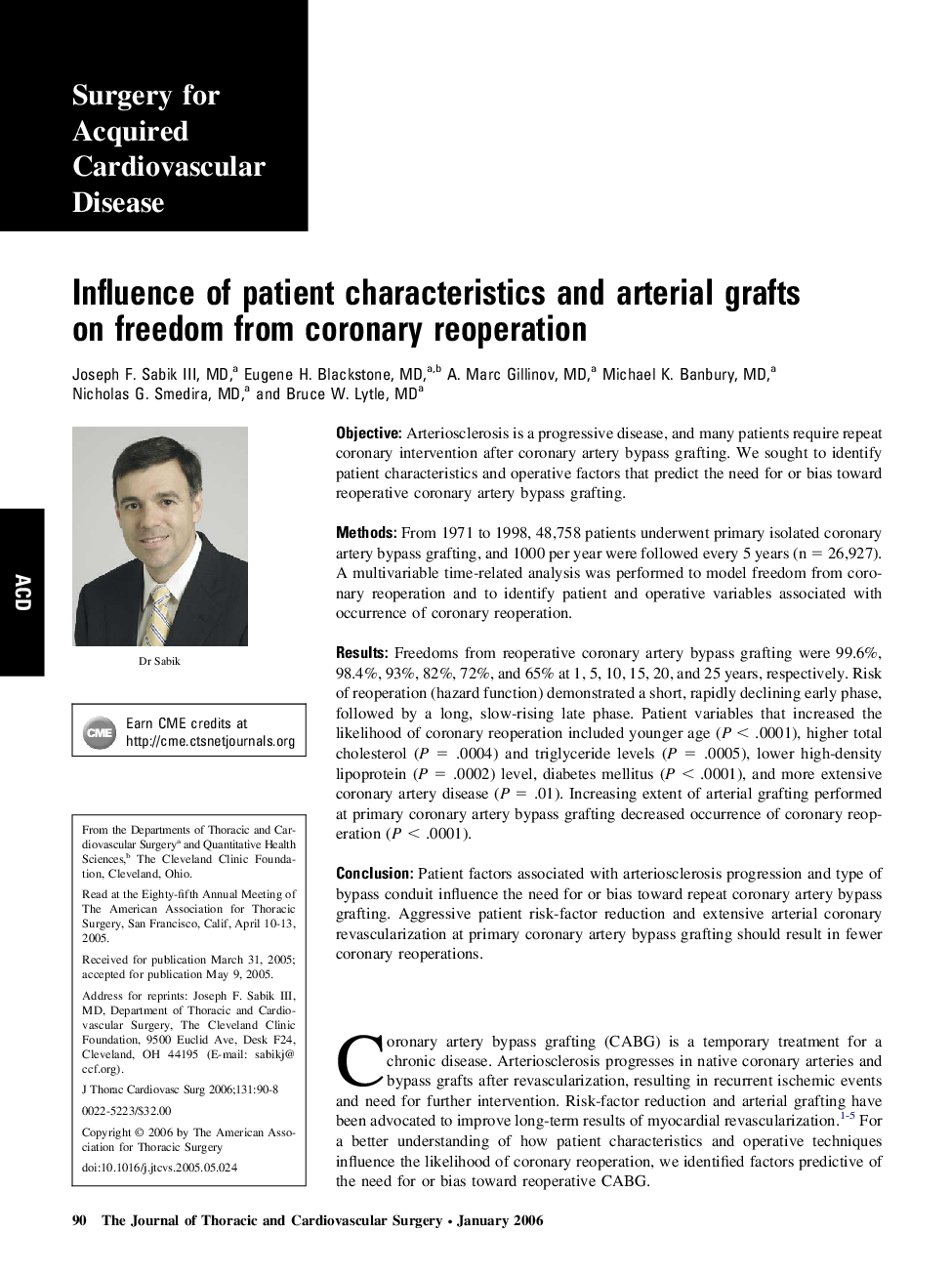| Article ID | Journal | Published Year | Pages | File Type |
|---|---|---|---|---|
| 2987211 | The Journal of Thoracic and Cardiovascular Surgery | 2006 | 9 Pages |
ObjectiveArteriosclerosis is a progressive disease, and many patients require repeat coronary intervention after coronary artery bypass grafting. We sought to identify patient characteristics and operative factors that predict the need for or bias toward reoperative coronary artery bypass grafting.MethodsFrom 1971 to 1998, 48,758 patients underwent primary isolated coronary artery bypass grafting, and 1000 per year were followed every 5 years (n = 26,927). A multivariable time-related analysis was performed to model freedom from coronary reoperation and to identify patient and operative variables associated with occurrence of coronary reoperation.ResultsFreedoms from reoperative coronary artery bypass grafting were 99.6%, 98.4%, 93%, 82%, 72%, and 65% at 1, 5, 10, 15, 20, and 25 years, respectively. Risk of reoperation (hazard function) demonstrated a short, rapidly declining early phase, followed by a long, slow-rising late phase. Patient variables that increased the likelihood of coronary reoperation included younger age (P < .0001), higher total cholesterol (P = .0004) and triglyceride levels (P = .0005), lower high-density lipoprotein (P = .0002) level, diabetes mellitus (P < .0001), and more extensive coronary artery disease (P = .01). Increasing extent of arterial grafting performed at primary coronary artery bypass grafting decreased occurrence of coronary reoperation (P < .0001).ConclusionPatient factors associated with arteriosclerosis progression and type of bypass conduit influence the need for or bias toward repeat coronary artery bypass grafting. Aggressive patient risk-factor reduction and extensive arterial coronary revascularization at primary coronary artery bypass grafting should result in fewer coronary reoperations.
